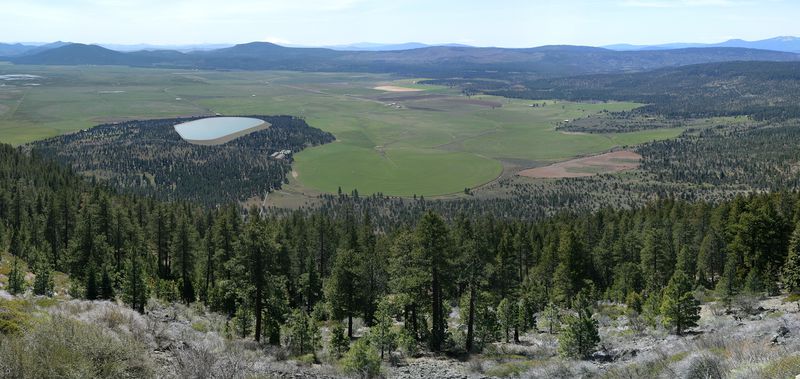Oregon’s mandate for 100% clean electricity by 2040 will be reenergized next year when construction begins on a crucial piece of the evolving power grid:
A 300-acre “battery” 11 miles north of Klamath Falls. A $1 billion project in which two 60-acre reservoirs will confront the threat of drought and power outages in the West.
Solar and wind power are now quite cost effective, cheaper than fossil fuels. But producing that clean energy is far easier than finding a place to store the energy so that electricity remains available when the sun is down and the wind flat.
As Matthew Hutson noted last month in The New Yorker, “By one estimate, we’ll require at least a hundred times more storage by 2040 if we want to shift largely to renewables and avoid climate catastrophe.”
The absence of that storage only sustains the nation’s reliance on coal, adds Erik Steimle at Rye Development. He’s worked on the Swan Lake North project in Klamath County for more than a decade.
Pumped hydropower, a technology that dates back to the late 19th century, is the world’s primary, most efficient storage battery. When wind and sunshine abound, the electricity they produce is used to pump water uphill from one reservoir to the other.
When sun and wind abate, the water is released back downhill over turbines, generating on-demand, carbon-free power along the way.
But pumping facilities are challenging to site. There’s been no new construction since the early 1980s. “The right geography is hard to find, permits are difficult to obtain, and construction is slow and expensive,” Hutson writes.
At Swan Lake, Steimle says, the federal-licensing process alone has taken seven years: “Developing and permitting new hydro power is like wearing a giant ‘Kick Me’ sticker on your back.”
But the crisis in greenhouse gas emissions and the clean-energy mandates no longer allow for dawdling, especially in California, Washington and Oregon. Half of U.S. hydroelectricity capacity is located in those three states, and in the past, Steimle says, “If we didn’t have the hydro, we’d rely on natural gas or coal.
“Those resources are not going to be available moving forward.”
It’s also problematic to depend on lithium-ion batteries for energy storage when those batteries require cobalt, and 70% of the world’s production is courtesy of the Democratic Republic of the Congo.
The Swan Lake “‘battery” has a lifespan of over 100 years, says Steimle, who lives on Portland’s eastside. “It doesn’t rely on a foreign supply chain. It doesn’t require a lot of land. It’s the infrastructure we can build that will last for generations.”
Oregon already has some of the cheapest electricity in the world, thanks largely to the 31 hydroelectric dams on the Columbia River and its tributaries. “Adding pump storage will not only keep costs low but will help us add the wind and solar into the system that we need to decarbonize the state.”
The project will also have quite the impact in Klamath County, says Randy Cox, CEO of the Klamath County Economic Development Association.
With Swan Lake, the county “becomes a critical energy hub for the state of Oregon,” Cox says. “It opens us up to companies who will locate here because they’re looking for consistent, 24-hour green power.”
Cox estimates that construction of the 393-megawatt project will create more than a thousand high-wage jobs over the next four years, a boon for a county with the state’s highest unemployment rate. Swan Lake will also provide $6.2 million in goods and services and $2.1 million in property taxes annually, Cox says.
A sub-station in Klamath County will connect Swan Lake to the high-voltage transmission corridor that connects public utilities from Washington to California. PacifiCorp and Pacific Gas & Electric would contract to store energy at Swan Lake, and those contracts, Steimle says, “will ultimately pay for the project.”
Those southern Oregon reservoirs are just the beginning of what the state needs to do if we’re serious about a a greener, cleaner future. Cars are the major source of greenhouse gas emissions in Oregon, Steimle notes: “Converting transportation to carbon-free is much harder problem to solve.”
But give Swan Lake its due. It’s a huge win for the environment. And it’s the rare development that draws support, and questions, from liberals and conservatives alike. Says Steimle, “We have to explain to people on both sides of the aisle what energy storage is, and why we need storage if we’re going to have 100% clean energy.”
— Steve Duin








